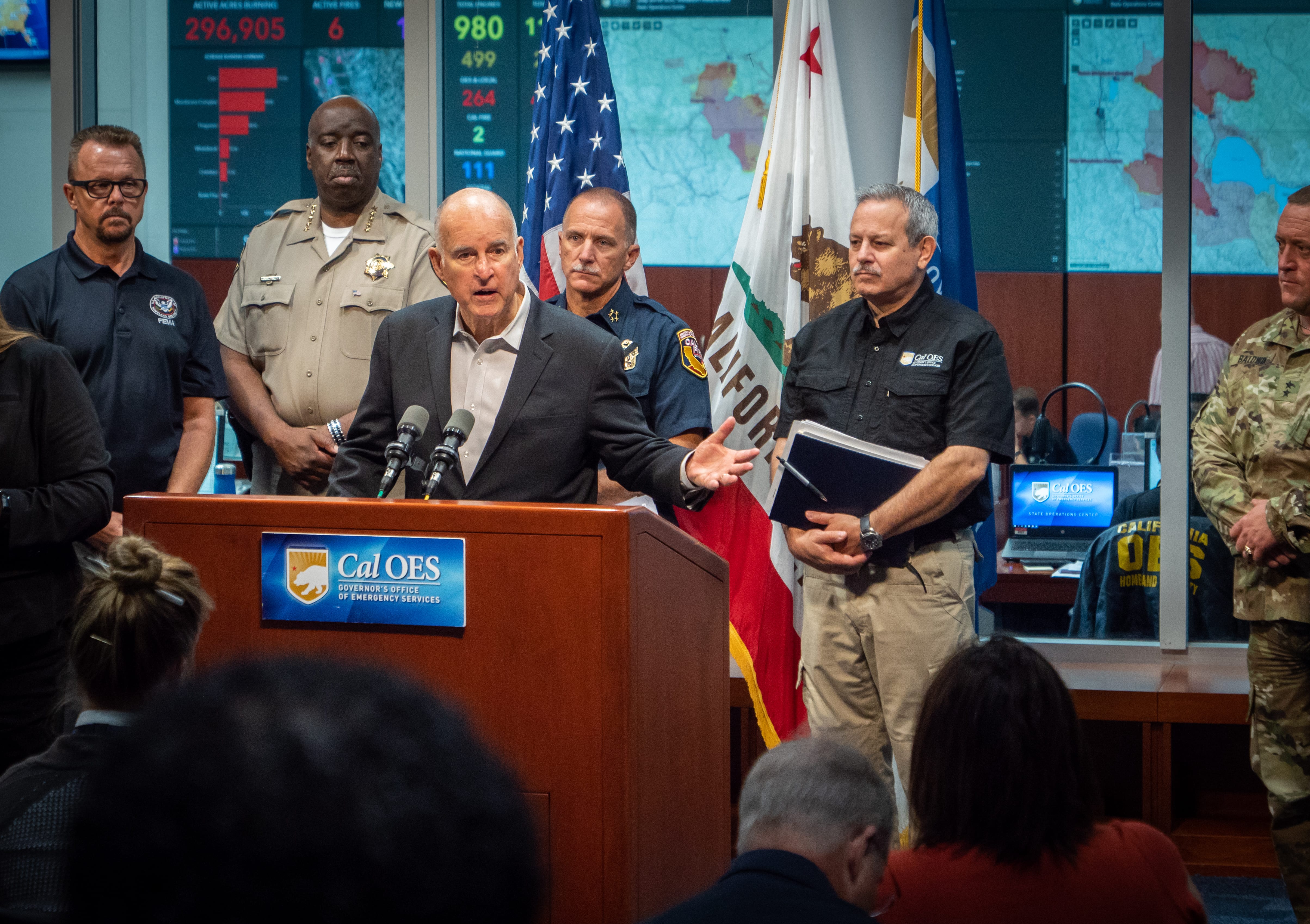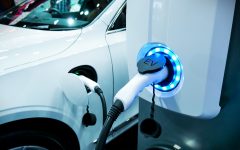
California fires. (Photo: fire.ca.gov)
More California Chickens Come Home to Roast
What was once the largest battery energy storage facility in the world just went up in flames and toxic smoke
By Andy Caldwell, January 22, 2025 1:42 pm
What burns hotter than a disco inferno? A fire in a battery energy storage system designed to store electricity from intermittent sources such as wind and solar.
Both Goleta and Nipomo have these battery energy storage facilities and Lompoc may soon have one too, while Morro Bay may have dodged the bomb, er bullet. What was once the largest battery energy storage facility in the world just went up in flames and toxic smoke at Moss Landing near Monterey, CA affecting upwards of 100,000 residents. This latest catastrophe is very important to the renewable energy scheme because solar farms produce too much electricity during mid-day and virtually nothing the rest of the day. If the mid-day surge can’t be stored, the solar energy source must either be shut off or the electricity virtually given away to other states lest it destabilizes the CA grid.
In a previous life, I was an industrial relations and safety manager at Union Sugar in Santa Maria. As a result of Prop. 65 passing in 1986 along with a series of other regulations, we had to have extensive safety measures in place to prevent explosions and hazards from harming our employees, our neighbors and first responders. These CA laws were passed after a horrific industrial scale accident in Bhopal, India. The premise behind the laws is that protocols and safeguards should be in place to ensure surrounding communities are not endangered by the off-site consequences of industrial accidents.
Yet, what was the emergency response protocol for the event that just happened at Moss Landing? Evacuate, shelter in place, and close all the schools in a 70-mile area surrounding the facility! In other words, the plan is to run for your life. This even though Gavin Newsom, on Oct 9, 2023, signed legislation to enhance battery storage safety standards after a series of similar mishaps in the state. SB 38 requires battery storage facilities to develop an emergency response plan in coordination with local emergency response agencies. That begs the question, why weren’t these facilities already required to have these plans because of the pertinent laws passed nearly 40 years ago? SB38 was only introduced in Sept. of 2022 after a previous fire broke out at the same battery storage facility at Moss Landing.
Then again, what did emergency personnel do to squash the inferno that erupted on Jan 16 at Moss Landing? Nothing. They waited for it to burn itself out. This has to do with the fact that these fires are chemical reaction fires and throwing water on them can make things worse, via a phenomenon known as thermal runaway. That is, there is no technology known to man to put out these industrial scale fires. Interstate 15 was closed for two days last summer when a truck carrying lithium batteries caught fire. Other fires, like the one in San Diego this past May, burned for about 2 weeks. Hence, there is no realistic requirement that these battery facilities have a cogent plan to prevent fires and to ensure there are no off-site consequences. Yet, our fire departments are signing off on these facilities?
The smoke from these fires is extremely toxic. Hence, to “save” the planet from increased levels of CO2, which is an oxymoron considering the real threat to the planet is when CO2 levels get too low, we are classifying these batteries as green energy. Heck, I remember when increased CO2 levels greening the planet was settled science, and greening the planet was a good thing.
Nonetheless, according to a global catastrophic risk analysis we are now threatening neighborhoods with a ticking time bomb that can feature high percentages of hydrogen, and compounds of hydrogen, including hydrogen fluoride, hydrogen chloride and hydrogen cyanide, as well as carbon monoxide, sulphur dioxide and methane, among other dangerous chemicals. On exposure to skin or by inhaling, Hydrogen Fluoride can result in skin burns and lung damage that can take time (hours to weeks) to develop following exposure. Hydrogen Fluoride can be quickly absorbed by the body via skin and lungs depleting vital calcium and magnesium levels in tissues, which can result in severe and possibly fatal systemic effects.
As I indicated in a previous column, these industrial-scale battery energy storage systems are not the only problem having to do with our effort to “go green.” Specifically, in addition to using batteries to store energy, the major efforts to replace the use of fossil fuels relies on the use of lithium batteries in cars, trucks, and bicycles. There is a myriad of problems associated with the use of these batteries. Additional hazards arise charging the vehicles, not to mention that dead batteries constitute a toxic waste stream. Regarding battery production plants, there have been several explosions at these plants including in South Korea where 22 workers were killed after a single lithium battery set off a series of explosions.
Western Journal reporter Jack Davis writes that Seneca Insurance company, citing data from across the US, reports “there have been 445 lithium-ion battery fires, 214 injuries, and 38 deaths. In New York City, E-bikes were responsible for 267 fires in 2023, 18 deaths, and 150 injuries, citing data from the Fire Department of New York. Over the past three years, lithium-ion battery fires have been the top cause of fatal fires in New York City”.
As Kermit the Frog used to say, “It’s not easy being green.”
- Three Insufferable Talking Heads Bring On $8 Per Gallon Gasoline! - May 28, 2025
- A Molotov Cocktail Toast to the Environment and Democracy - April 4, 2025
- More California Chickens Come Home to Roast - January 22, 2025








There are multiple energy storage approaches besides BESS that (depending on the particulars of your location and planning objectives) may be more competitive in terms of density, cost, reliability, sustainability, and fire risk. For example, RNG projects with linear generators are among options to potentially consider for preventing future battery energy storage fires from occurring on the Central Coast. Tell your servicing utility and elected representatives you want them to assess all energy storage approaches, and make the most competitive choice for the projects that serve (or are near) you. https://www.politico.com/news/2025/01/17/worlds-largest-battery-plant-on-fire-in-central-california-00198914
I’m curious to know how many Prop 65 labels at Moss Landing were still readable after the incident.
It would be interesting to see figures on the dollars per kilowatt hour cost for electricity supplied to the grid by the Vistra Energy facility along with the size of the subsidies and de facto subsides that the facility has received.